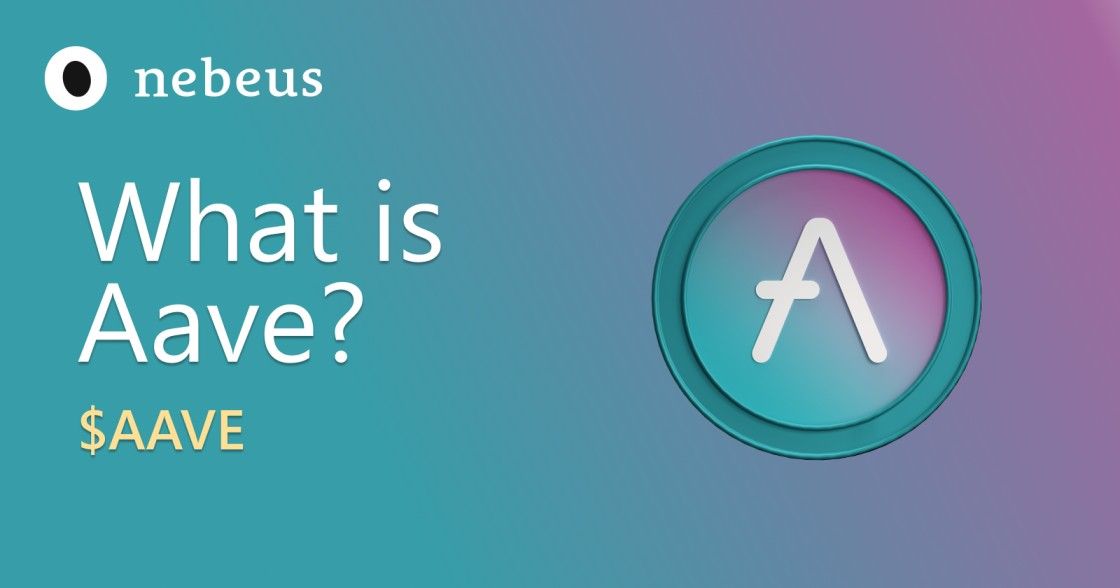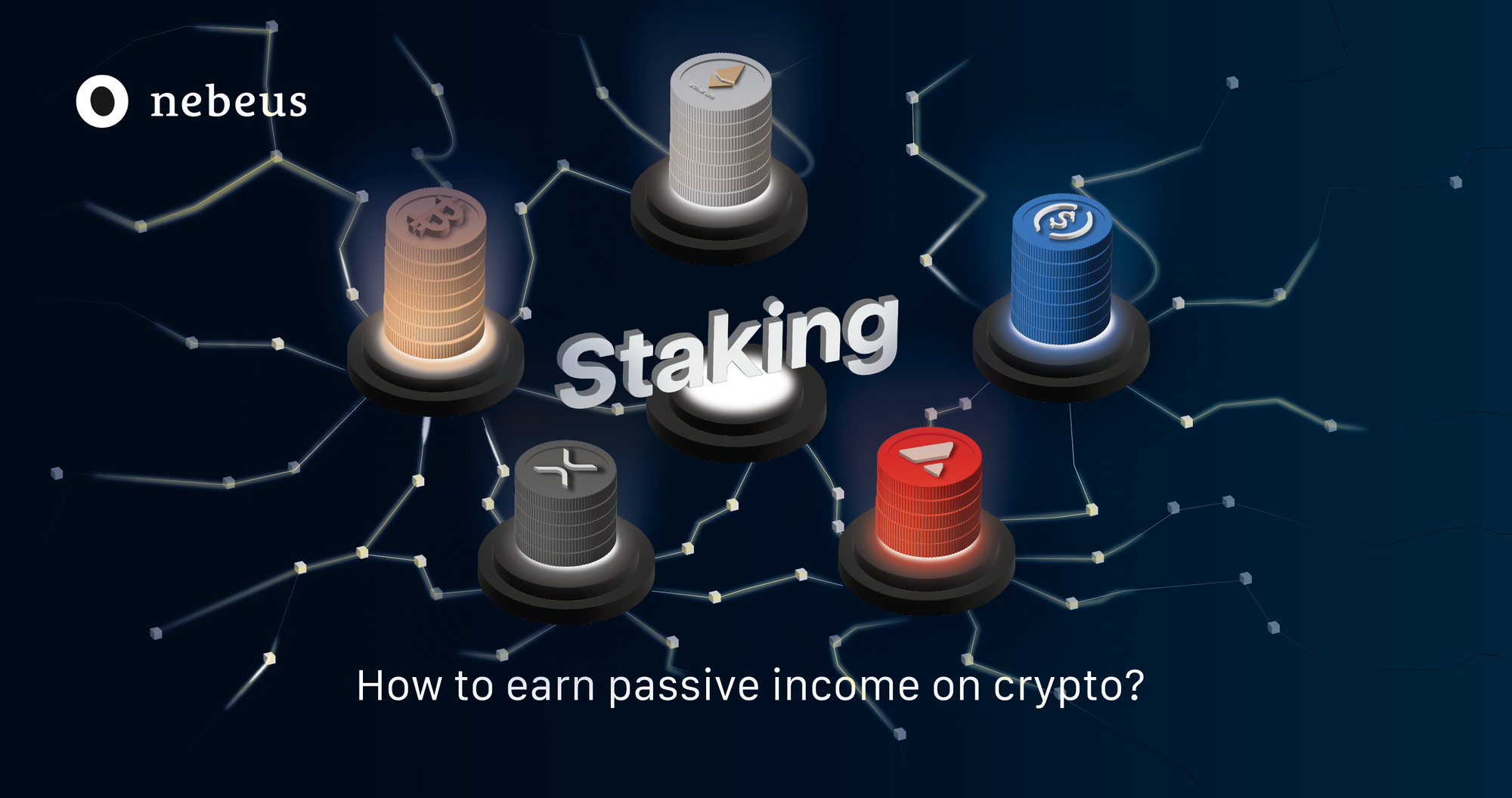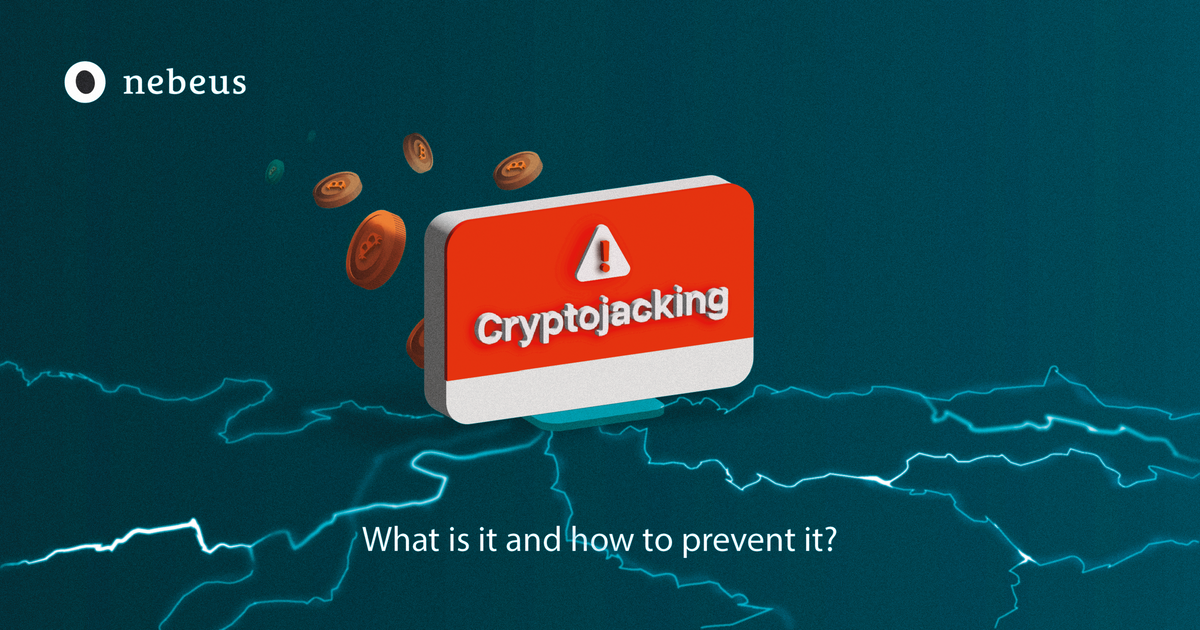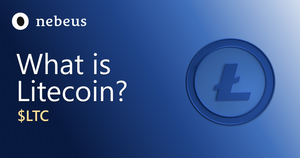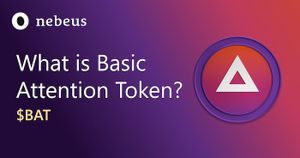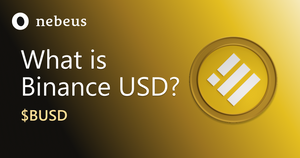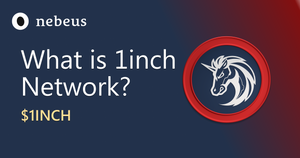Note: This is part of Nebeus’ new Coin Analysis series, where you can discover the latest crypto coin news.
Put simply, Aave is a network of lending pools.
Going deeper, Aave is a decentralised lending system that allows users to do four main things, all without middlemen:
- Supply into the protocol and watch your assets grow as a liquidity provider
- Stake your Aave into the protocol by depositing it and earn rewards for securing the protocol
- Borrow against your collateral from across multiple networks and assets
- Participate in Aave governance and vote on new proposals, new assets, and protocol upgrades
This protocol’s principal purpose is to create an open and transparent ecosystem with simple services to facilitate the adoption of decentralised money. On the Ethereum mainnet in January 2020, its non-custodial protocol brought many advancements to the DeFi market.
There’s even a meaning behind the name. In Finnish, Aave means “ghost”, representing the protocol's objective to be transparent and open in DeFi.
Aave runs on Ethereum and is a system of smart contracts that allows a distributed network of computers running its software to handle assets.
Because the protocol is open source, any third-party service or application can interact with it and enhance it how they see fit. So Aave customers don't have to trust a specific institution or person with their money. They need only trust its programming to work as intended.
What is the $AAVE Token?
ETHLend’s original cryptocurrency was LEND, which was converted into AAVE after the name change.
In general, AAVE allows users to vote on modifications to its rules and policies that would improve its software, known as Aave Improvement Proposals (AIPs). To increase AAVE’s value, it has a limited supply of tokens that are purchased via fee profits to take it out of circulation.
AAVE has a special smart-contract feature known as a Safety Module, abbreviated as SM. SMs allow lenders to stake the native token, which would prop up AAVE if a deficit in liquidity arose, otherwise known as a Shortfall Event, in the ecosystem. Although this may seem risky, these stakers are rewarded for helping secure and insure the system with additional AAVE tokens as well as a cut of the protocol fees, making it a tempting proposition for many.
The main benefit for those borrowing the AAVE token is that taking out loans in this token is not subject to fees. A bonus is that any borrowers who decide to provide AAVE as collateral save on fees.
How to buy Aave? $AAVE
Several crypto exchanges accept fiat currency in return for purchasing AAVE. Or, it can be retained, sold, and transferred through Nebeus at one of the greatest prices available.
You can purchase AAVE on the exchange by bank transfer or credit/debit card after entering basic personal information.
Before purchasing AAVE, make sure you have a safe way to store your tokens.
How does Aave ($AAVE) work?
The Aave protocol allows users to create loan pools for 17 different cryptocurrencies, including ETH, BAT, and MANA. Participants deposit funds to lend into a liquidity pool. Borrowers can then use those pools to obtain loans. A lender can trade or transfer these tokens as they please.
A smart contract allocates your funds. The smart contract code is open source, formalised, and audited by external parties. You can withdraw funds from the pool at any time or export your lender position as an aToken. aTokens are cryptographic assets that may be traded on Ethereum.
In addition to aTokens, which lenders use to collect interest on deposits, Aave has another called AAVE, Aave's native tokens.
Aave, like other decentralised lending platforms on Ethereum, requires collateral. Individuals looking for a loan can only borrow up to the value of the collateral. Borrowers receive funds in the form of an aToken, which is linked to the other asset's value.
Now in Nebeus you can exchange and hold AAVE, and soon use it as collateral to get a crypto-backed loan.
What are Flash Loans from Aave?
Aave enables “flash loans” to be issued and cleared immediately.
As with other blockchains, transactions are only finalised when the network accepts a fresh block of transactions. However, adding blocks takes time. But Aave’s flash loans are almost instant compared to Bitcoin’s 10-minute timeframe, taking 13 seconds. Plus, these fast loans require no upfront collateral.
Aave’s flash loans allow borrowers to request cash, but they must pay back the liquidity plus a fee and interest within one block. Otherwise, the transaction is cancelled, and no coins were ever borrowed. As a result, neither Aave nor the borrower takes a risk.
A borrower may use a flash loan to profit from trading opportunities or other Ethereum-based systems. If used correctly, there is the opportunity to use flash loans to trade crypto coins automatically and yield trading profits with ease.
Who Are the Founders of $AAVE?
Stani Kulechov, the CEO, started Aave back in 2017 when he was a law student in Helsinki. With a now-expanded team of 29 employees, Aave is located in Switzerland.
The company used to be called ETHLend. Unlike Aave, ETHLend attempted to match lenders and borrowers directly rather than pooling funds.
In terms of future directions for the company, the team have been talking of Aave developing a trading desk for huge trades, a game studio focused on blockchain games, and a new payment mechanism.

What makes $AAVE different?
There are many features that set AAVE apart from other projects. We’ve listed the most important ones down below:
You Can Earn Real-Time Interest
What makes the AAVE protocol unique is that it allows users to earn interest in real-time because deposits are tokenised as Aave interest-bearing tokens, otherwise known as aTokens.
These tokens are set at a 1:1 ratio to underlying assets, and although interest is also paid in aTokens, they are easily converted back to the asset when lenders withdraw their funds.
Gas Fees Have Been Cut by 25%
Version 3 of the AAVE Market provides greater efficiency, enhanced security, and cross-chain functionality across multiple chains.
Further, in AAVE V3, gas costs have been slashed by roughly 20-25% across the entire ecosystem.
It Lets You Choose from a Diverse Variety of Markets on its Aave Protocol
With AAVE, you’re spoiled for choice in terms of the number of markets available:
- Ethereum - which is the largest by liquidity
- Polygon - great for lots of transactions
- Avalanche - ideal for instant and affordable transactions
- Arbitrum - which prioritises secure transactions
- Aave Arc - designed for institutions and private funds
- Fantom - for those interested in dApps
- Harmony - aims to bridge different ecosystems
Security is a Top Priority - and Aave Reward You For Helping Achieve This
The AAVE team is big on security, so the top security firms in the world have audited the protocol, including OpenZeppelin, Certora, and Trail of Bits.
It doesn’t stop there. With V3, they have launched a Bug Bounty program that invites users and community members to inform the AAVE team of any bugs or security issues.
By doing so, these users both gain rewards for their help and aid in making the AAVE ecosystem even more secure.
Rewards up to USD $250,000 will be distributed according to the nature of the bug uncovered.
How many Aave ($AAVE) coins are there?
Max Supply: 16,000,000
Circulating Supply (06/04/2023): 14,356,284
Currently, approximately 89.7% of the total supply is already in circulation.
Back in 2017, when the company was called ETHLend, it received $16.2 million through an ICO, resulting in the sale of 1 billion units of LEND.
After the LEND cryptocurrency converted to AAVE at a ratio of 100 LEND to 1 AAVE, the supply of AAVE was reduced to 16 million.
Note: We gather our information from CoinGecko. The numbers written are correct at the time of writing.
What is the Current Price and current Market Cap?
(06/04/2023)
Current Price: $79.00
Current Market Cap: $1,133,979,958
Current Market Cap Position: #48
All-Time Low: $26.02 on November 5th, 2020
All-Time High: $661.69 on May 18th, 2021
Note: We gather our information from CoinGecko. The numbers written are correct at the time of writing.
FAQ
Is AAVE crypto a good investment?
AAVE crypto can be a good investment for those who are looking to invest in the cryptocurrency market. AAVE is the native token of the Aave decentralized finance (DeFi) platform, which allows Aave users to borrow, lend, and earn interest on cryptocurrencies. As with any investment, it's important to do your research and consider factors such as the team behind the project, the technology and innovation it offers, and overall market conditions.
What does the Aave token do?
Aave tokens serves as the governance token for the Aave platform. AAVE holders can vote on proposals related to the development and management of the platform, including changes to AAVE fees, interest rates, and other parameters. Additionally, Aaveusers who deposit Aave tokens as collateral can receive discounts on borrowing fees and other benefits.
How does Aave gain value?
Aave gains value through a variety of factors, including the overall demand for the Aave platform and the services it offers. As more users adopt the Aave platform for borrowing, lending, and other Aave DeFi activities, the value of the Aave token could potentially increase. Additionally, changes to the Aave platform's parameters or governance could also impact the value of the Aave token.
What blockchain does Aave use?
Aave is built on the Ethereum blockchain, which is one of the most widely used blockchain platforms for decentralized applications and smart contracts. This allows Aave to take advantage of the security, scalability, and interoperability features offered by the Ethereum network.
Conclusion
Ready to get involved with Aave already? Join its thriving community of users, developers, and researchers on one of its channels:
- Aave - Reddit
- Aave (@AaveAave) - Twitter
- Telegram: Contact @Aavesome
- Aave Community - Discord
- Aave (@aave.aave) - Instagram
You can sign up for a Nebeus account to buy and hold your AAVE investment.
La inversión en criptoactivos no está regulada, puede no ser adecuada para inversores minoristas y se puede perder la totalidad del monto invertido.


